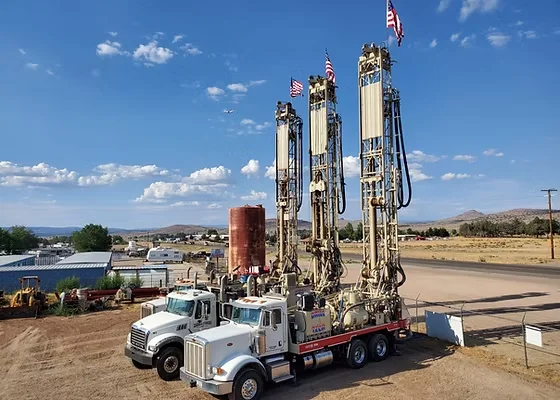Transporting an oil and gas rig is no small feat. These massive structures are the backbone of drilling operations, but moving them from one site to another—whether across land or sea—requires meticulous planning, specialized equipment, and expert coordination.
In this guide, we’ll explore the complexities of oil rig transport, the safety measures that keep crews and equipment secure, and why partnering with the right logistics provider can make or break your move.
Understanding the Complexities of Oil and Gas Rig Transportation
An oil and gas rig can weigh thousands of tons and span hundreds of feet. This isn’t just oversized cargo—it’s one of the most complex logistics challenges in the transportation industry.
Key challenges include:
Size and Weight: These rigs often require oversize load trucking permits and specialized heavy haul trailers.
Remote Locations: Many rigs are stationed offshore or in isolated drilling fields.
Regulatory Requirements: Permits, pilot cars, and route planning vary from state to state.
At Freight Guru, our Heavy Hauling Services are designed to handle these complexities, ensuring safe and compliant moves from start to finish.

Planning the Move: Why Logistics is Everything
A successful oil and gas rig relocation starts with rig move logistics. This involves:
Pre-Move Inspection
Rig components are evaluated for disassembly, weight distribution, and safety compliance.Route Planning
Routes are mapped for height, width, and weight restrictions. We often coordinate with local authorities to minimize risks during transport.Equipment Coordination
From drilling rig hauling trucks to cranes for lifting, all equipment must be synchronized for seamless operations.
The Role of Specialized Equipment in Oil Rig Moving
When transporting an oil and gas rig, not just any truck will do. Specialized equipment includes:
Multi-axle lowboy trailers for extreme weight capacities.
Self-propelled modular transporters (SPMTs) for maneuvering tight spaces.
Heavy-duty cranes for lifting rig components.
Our Heavy Equipment Transport fleet is built for these kinds of oversized loads, ensuring every piece arrives safely.
Why Oil Rig Moving Companies Outperform General Carriers
Not all carriers are equipped to handle offshore rig transport or drilling rig hauling. Specialist companies bring:
Industry Expertise: Years of handling similar projects.
Dedicated Safety Teams: Crews trained in rig-specific hazards.
Regulatory Knowledge: Navigating the web of state and federal permits.
Just as our Specialized Transport services are tailored for oversized and high-value equipment, oil rig moves demand the same level of precision.
Safety Considerations During Oil and Gas Rig Transport
Safety isn’t optional—it’s the foundation of every rig relocation. Common safety measures include:
Wide Load Flags & Pilot Cars: Essential for oversized load visibility.
Escort Vehicles: Help manage traffic and navigate challenging turns.
Securing the Load: Using heavy-duty chains, binders, and tensioning systems.
Our Oversize Load Trucking solutions ensure safety from departure to destination.
Case Study: Successful Rig Move Across State Lines
In a recent project, we transported an onshore drilling rig over 600 miles. Key steps included:
Pre-move engineering assessments.
Coordinated pilot cars across multiple states.
Real-time GPS tracking for client visibility.
The result? Zero incidents, on-time delivery, and full regulatory compliance.
Common Mistakes in Oil Rig Relocation—and How to Avoid Them
Underestimating Permitting Time – Permit delays can halt the entire move.
Choosing a General Carrier – Lack of specialized experience can lead to costly damage.
Skipping Safety Escorts – Increases accident risks and legal liabilities.
Avoiding these pitfalls starts with hiring a specialized oil rig moving company like Freight Guru.
Why Freight Guru is Your Best Choice for Oil and Gas Rig Moves
When it comes to oil and gas rig transport, experience is everything. At Freight Guru, we offer:
Proven track record with heavy haul and oversized load projects.
Nationwide and international coverage for both onshore and offshore rigs.
Full-service solutions from disassembly to final installation.
Learn more about our Freight Shipping solutions or get in touch for a custom quote.
Conclusion: The Safest Way to Move Your Oil and Gas Rig
Moving an oil and gas rig isn’t just another freight job—it’s a high-stakes operation that demands expertise, precision, and the right team. With specialized oil rig moving companies like Freight Guru, you get more than transportation—you get peace of mind.
From route planning to safety compliance, we ensure your rig arrives on time, on budget, and ready for action.

